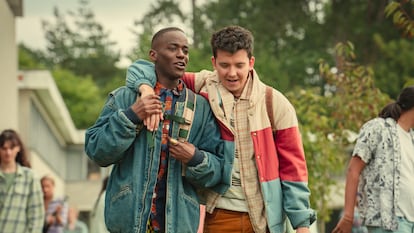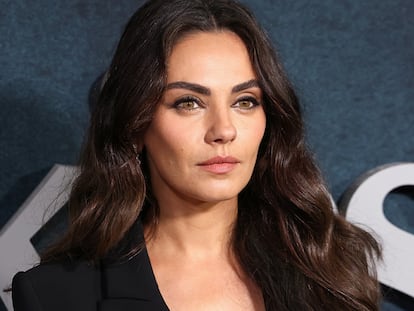The sexologist on campus comes to a close: The end of ‘Sex Education’, the series that shattered teen stereotypes
The show’s creator Laurie Nunn talks to EL PAÍS about her love of the teen genre, the writing process and the importance of having open conversations about empowerment and consent
Now that Sex Education has ended, its creator, screenwriter Laurie Nunn, smiles as she remembers how the series that debuted on Netflix in 2019 came into existence. “Basically the idea was: what would happen if we put a teenage sex therapist on a school campus? I instantly loved it, it seemed like a brilliant opportunity to create a series that celebrated the teen genre,” explains Nunn in a video call interview in mid-September.
But Sex Education does not resemble any other traditional TV show about young people brimming with hormones. In fact, if there is one thing that Nunn is proud of, it is that her show managed to subvert the clichés and characters of the teen genre. As she explains, she took characters — such as “the weird virgin, the bad girl, the bully, the gay best friend” — and gave them depth. “I wanted to find a way to look at those characters from a different perspective and go deeper into them. To discover something new in the stagnant stereotypes.”
Both Nunn and director Ben Taylor, who directed the first three seasons of Sex Education, are big fans of teen series and movies. “He totally loves those movies, especially those by John Hughes [director and screenwriter of classics of the genre such as The Breakfast Club, Ferris Bueller’s Day Off or Sixteen Candles]. I love stuff like Freaks and Geeks, 10 Things I Hate About You, Never Been Kissed… It was natural for us to find a way to update those conversations and make them seem more modern,“ says Nunn.
That pursuit gave birth to Otis, a teenager from a liberal environment whose mother is a sexologist — and the person who all his classmates go to for advice on all issues concerning sex; Maeve, the rebellious, mature and aloof young woman who joins the project of organizing a sexual clinic at the school; and Eric, the gay friend who gains depth and protagonism over the four seasons, becoming one of the show’s most beloved characters. There is also Adam, the high school badass who suddenly finds himself having feelings for another man and discovers he is bisexual. And many other secondary characters, who have a wide range of personalities, backgrounds and sexual orientations, be it Aimee and her battle with trauma, the not-so-superficial Ruby, or the adults in their program and their struggles with parenthood.
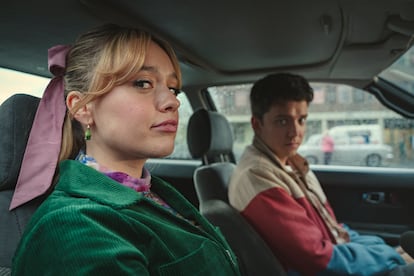
The fourth season takes the characters beyond Moordale Secondary School, where the bulk of the action has taken place up until now. Otis and Eric end up in an even more liberal school, where students call the shots. It even has its own sexologist. Maeve travels to the United States with the goal of becoming a writer; Adam tries to find his way in life among animals, and Aimee breaks with her past and faces her traumas. The emotion and drama is even more intense than the previous seasons. After all, the kids in Sex Education are getting older.
When Nunn started writing the fourth season, she didn’t plan for it to be her last. “I work on the script in a fairly organic and fluid way, we constantly rewrite and tweak plots even while we are recording. As the writing process progressed, I began to realize that all the plots were reaching their natural ending, I liked the place where each character ended, there were no stories that were left pending, and it seemed very good to leave it when the series, or so I want to think, is still liked by fans,” explains the screenwriter.
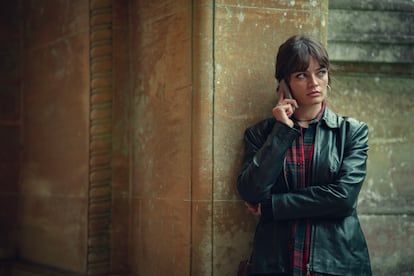
In addition to revamping the adolescent genre, Sex Education also wanted to show youth diversity and have characters that talked in an unprejudiced and open way about sexuality. “As it progressed, we were able to add more characters with different backgrounds. In reality, what it does is reflect the diversity of our writers’ room, with a lot of women, LGBTQ writers... and each one injects many of their experiences. I am so proud that we have been able to champion some of the most underrepresented voices,” she says.
As time went by, the series could also become more daring. “We added a lot of crude humor, like penis jokes and stuff like that. But we also deal with serious issues and find a way to marry those two things in a tone that’s half happy and half sad,” she explains.

Sex Education is Nunn’s first show as creator. Although she had experience as a screenwriter, she had never before experienced the responsibility of carrying a production of this caliber on her shoulders. “The truth is that I didn’t expect people to connect with the series the way they did. I thought it was too strange and that it was going to be difficult for them to latch on to it and take that leap of faith to accept it.”
But that’s exactly what happened: Sex Education has been one of the most successful series on Netflix, with a significant base of loyal and very passionate followers. “I’ve tried to stay out of the fan noise because it’s easy to start writing the series that people want instead of the one you want.”
Many high schools and universities still lack proper sex education programs. Nunn says that sex education at her school was practically non-existent. “Now I think that young people are much more aware and young women in particular, I think they have many more tools to talk about their own bodies, about their desires and their sexuality. Regardless, I still think we have a very long way to go in terms of having open sexual education that emphasizes empowerment and consent. It still seems scary to talk about these issues.”
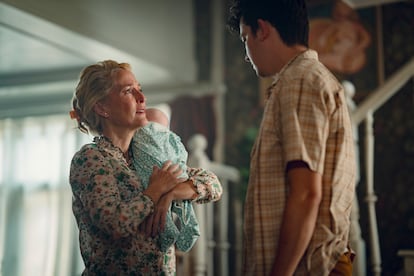
Although Sex Education is about teenagers, Nunn took special care to ensure that the adult characters (one of whom is played by Gillian Anderson, initially the most recognizable face among the cast) have plots and interesting developments. “I remember when I saw the movie Juno, I loved the way the parents weren’t the antagonists, and I thought it was a very refreshing look at the teen genre. In Sex Education I wanted to do something like that, that adults were not obstacles for teenagers, but were complex characters. I also know that many people from older generations have seen the series and like it, I have even heard of families in which everyone watches the series. You might not watch it together, because that would be a little weird [laughs], but it’s a way to start conversations and break that divide. After all, our parents were also 16 years old once.”
Sign up for our weekly newsletter to get more English-language news coverage from EL PAÍS USA Edition
Tu suscripción se está usando en otro dispositivo
¿Quieres añadir otro usuario a tu suscripción?
Si continúas leyendo en este dispositivo, no se podrá leer en el otro.
FlechaTu suscripción se está usando en otro dispositivo y solo puedes acceder a EL PAÍS desde un dispositivo a la vez.
Si quieres compartir tu cuenta, cambia tu suscripción a la modalidad Premium, así podrás añadir otro usuario. Cada uno accederá con su propia cuenta de email, lo que os permitirá personalizar vuestra experiencia en EL PAÍS.
¿Tienes una suscripción de empresa? Accede aquí para contratar más cuentas.
En el caso de no saber quién está usando tu cuenta, te recomendamos cambiar tu contraseña aquí.
Si decides continuar compartiendo tu cuenta, este mensaje se mostrará en tu dispositivo y en el de la otra persona que está usando tu cuenta de forma indefinida, afectando a tu experiencia de lectura. Puedes consultar aquí los términos y condiciones de la suscripción digital.
More information
Archived In
Últimas noticias
Most viewed
- David King, chemist: ‘There are scientists studying how to cool the planet; nobody should stop these experiments from happening’
- Alain Aspect, Nobel laureate in physics: ‘Einstein was so smart that he would have had to recognize quantum entanglement’
- Mexico completes its trade shift with the entry into force of tariffs on China and countries without trade agreements
- Reinhard Genzel, Nobel laureate in physics: ‘One-minute videos will never give you the truth’
- Oona Chaplin: ‘I told James Cameron that I was living in a treehouse and starting a permaculture project with a friend’
